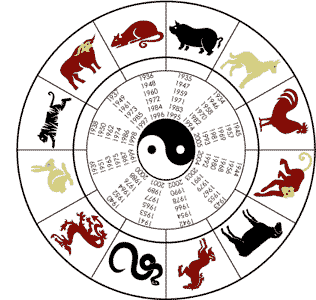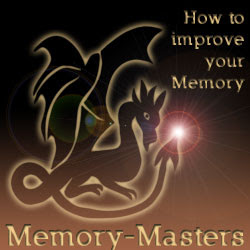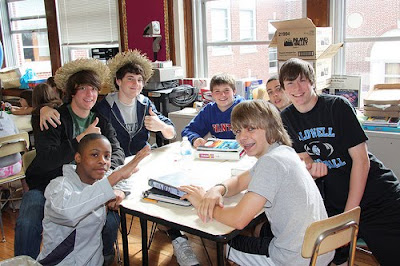Earlier this year I set myself the goal of being able to recall the names of all the
countries of the world and their
capitals. There are two parts of this project. The first is to be able to recite the names of the countries in sequence, and the second is to recall the capital of a given country. In addition, I should be able to recall the country when given a capital city.
My approach to memorising this project and the lessons learnt are described in this article.
1. I created a list of country names and capitals in an Excel spreadsheet. This information was sourced from the World Guide reference book.
2. I made a rough division of the world into continents and regions. This created problems as not every reference book classifies the counties so neatly. What are the borders of Europe? Which countries are in Asia? I made some mistakes on my virtual journey around Africa as I missed some islands in both the Pacific Ocean and Atlantic ocean.
3. Using a map, I worked out a journey starting in the United Kingom, and hopping from country to country in turn. I then assigned each country a sequence number for the order of memorisation.
4. I used the number peg system to associate a number to a country. Because there are over 200 countries, and my peg system consists of 100 pegs, I added
colour to my pegs to create a new set of number pegs from 100 to 999. The first 100 pegs are
red, the second 100 are
green, the third hundred are
blue.
In hindsight, the colours were sometimes difficult to recall and I should have used more
action or involving the
senses for example, icy cold, windy, and burning hot.
5. Now I had a list of coloured peg numbers, countries and capitals to learn. The list begins with the United Kingdom:
- 101 United Kingdom - London
- 102 Ireland - Dublin
- 103 Portugal - Lisbon
- 104 Spain - Madrid
- 105 Andorra - Andorra la Vella
- 106 France - Paris
- 107 Luxembourg - Luxembourg
- 108 Monaco - Monaco
- 109 Belgium - Brussels
- 110 Netherlands - Amsterdam
6. The memorisation process involves creating a strong mental image between the coloured peg word and the country. In addition I needed to create an association between the country and the capital.
I made small cardboard flashcards with the number on one side and the country and capital on the back. I took around 20 cards and a pencil with me on my daily walk to create vivid images. Some of my early images were not too good but I got better as my imagination became wilder with practice.
Here are my first ten peg numbers (based on the Major System).
- tie
- Noah
- ma
- Ra
- law
- shoe
- key
- ivy
- bee
- toes
Mental images and associations can be wild, sexy, and maybe offensive to some people. Let your imagination go wild as you are under no obligation to explain your images to other people. These are my images:
1 red tie -> United Kingdom - London A group of three KINGS have been tied up with a RED TIE but they are puffing up their lungs/chests (LONDON)
2 red Noah -> Ireland - Dublin a red faced Noah is drinking double-sized (DUBLIN) Guinness with a short leprechaun. (This image is sufficient to prompt my recall of Ireland since I know that Dublin is the capital of Ireland)
3 red ma -> Portugal - Lisbon - a large black woman (Mama) is sitting on the Porch (PORTUGAL) of her house and cuddling her Lesbian (LISBON) lover.
4 red Ra -> Spain - Madrid. A red Pharaoh (my image of Ra) is sailing down the Nile waving a Spanner (SPAIN) and shouting loudly because he is MAD.
5 red law -> Andorra - Andorra la Vella. A red faced lawyer is banging the door (ANDORRA) which bursts open onto a large valley (Andorra La Vella)
6 red shoe -> France - Paris - a red shoe is kicking a soccer ball into the Arc de Triophe in Paris and hitting the red, white and blue French flag.
7 red key -> Luxembourg - Luxembourg. A large red key is pushed into a large cake of LUX soap (an Australian brand of soap) which is between two large hamburger buns (LUX + HAMBURGER). Because I didn't add any more imagery, I know that the capital city is the same name.
8 red ivy -> Monaco - Monaco. A large piece of red ivy is draped around the neck of a MONK.
9 red bee -> Belgium - Brussels. An enormous red bee is stinging a luscious Belgiuan chocolate which is surrounded by Brussel Sprouts (BRUSSELS).
10 red toes -> Netherlands - Amsterdam. A foot with red painted toes is pushing into a wooden clog which in turn is kicking a hamster (Amsterdam) into a large net (Netherlands) draped over water (next to a dyke).
7. Testing and Review
I used the
Mnemosyne Spaced Repetion flashcard software (Mnemosyne is free software and runs on Windows, Mac and Linux) to test my recall. The program displays a card with the number, I recall the country and capital, then show the answer. The program schedules the card for future review based on how I rated my recall.
Once I remembered a country I removed the card from the paper card collection and added more cards.
8. Countries and Territories.
As I memorised the islands of Africa and South America I encounted territories of other countries. Do I memorise these or not? I decided to remember
most of the territories and to identify them I included the image of a
terrier dog. For example, Montserrat is a British Territory with capital of Plymouth. The peg number is 302 which is a Blue Noah. My memory image is a blue-faced Noah chasing a Monster Rat (Montserrat) who is also being chased by a terrier dog with a plum in its mouth (Plymouth).
9. Continents to Country link
Towards the end of my memorisation project I realised I didn't have a means to recall the first country in my sequence for a particular continent.
I created a list of continents with the peg number for the first country in sequence. I converted the number into an image using the Major system then built an association.
Europe - 100 -
Daisies
Eastern Europe - 145 -
Trolley /
Trowel
Middle East - 150
Tiles
Asia - 164
Teacher (in an indian classroom)
SE Asia 177 -
hat cock (rooster)
ASia Pacific - 194 -
toe bar
Africa - 216 -
Ant - Ouch! bitten by ants
North and Central America - 269 -
nacho bee
South America - 279 -
knee cap
Caribbean - 293 -
napalm
If I want to recall the countries of Africa, I think of the ants biting (ouch!), convert this to 216 which is
green tissue. My key image is the pyramids (Egypt) covered in green tissue paper with cars (Cairo) driving down the sides of the pyramids. I can now continue in sequence, recalling the country associated with 217, 218 and so on.
10. Mistakes
After I memorised the countries of Africa it was pointed out to me I had omitted two islands. I had to add these countries on to the existing peg. For example, I omitted Seychelle (capital Victoria) so I added it to the peg for Comoros (Moroni). Now my mental image was a
cormorant with a
green mace (key word for 230) in its beak with a
moron hanging on to
mace. The moron is wearing a necklace of sea-shells with a picture of Queen Victoria.
11. Capitals to Countries.
Since I had the country and capital information in a spreadsheet, I imported the capital to country data into Mnemosyne for additional testing. I found this is a good way to confim my knowledge of the countries.
12. Lessons learnt
I use Mnemosyne daily to review my Country/Capital cards. My recall of some countries is still weak but I do know the information and Mnemosyne is helping me push the information into long term memory. It is important to review daily and Mnemosyne is the most time efficient method.
When preparing to memorise a large amount of information, I learnt how important it is to compile and check
all the details. Then the memorising process can proceed.
Some of my 100 peg words didnt have strong images and these got changed during the course of this project. For example,
ball is not a strong image for 95, but
bull is more memorable. I used to use
FAB (the washing powder) for 89 but I also use
vibe (vibraphone). I have found it is possible to remember multiple keywords for the number pegs without becoming confusing.
Mnemosyne (when used daily) is a great way to assess how fast it is possible to memorise a lot of information. I only worked on creating associations on my weekends or an occasional lunchbreak, but I used Mnemosyne almost daily for review. Often I would be frustrated at how I had forgotten things, and sometimes I would refine the image to help my recall.
I also learnt how to convert very difficult words into something memorable. For example:
- Equatorial Guinea - A guinea pig running around the Earth's equator
- Burkina Farso - a fat lady wearing a bikini (Bikini Fatso)
- Liberia (capital Monrovia) used the image of a group of choir boys from Libera driving the Moon Rover.
- Senegal (Dakar) - a man waving his pants ("Daks") at a flock of seagulls.
Click on the picture below to show the information I have memorised.
More information:













